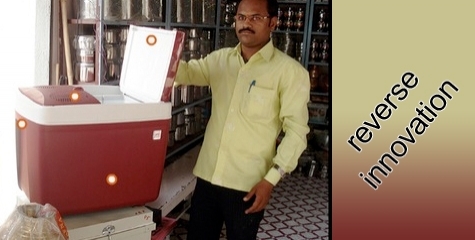Please use these boxes to provide up to 2 drivers of HIGH importance. Click on HELP to see examples:
|
|
Driver 1
|
Driver 2
|
|
Social
|
So far people in developing countries are still underserved by Western companies and therefore often have to look for themselves for innovative solutions that are affordable and fit their specific needs. Slowly companies in developing regions are now becoming aware of these market opportunities and try to adapt their innovation strategies (Bottom-of-the-Pyramid-Solutions)
|
|
|
Economic
|
Asia is expected to be the global powerhouse of economic growth in the future. Especially Asian companies have caught up in many areas and are about to overtake Western player in a lot of market segments and will develop a large amount of new ideas.
|
|
|
Political
|
Especially Chinese and Indian Governments spent large sums on R&D and promote the foundation of innovation cluster. Furthermore officials support companies to acquire Western knowledge.
|
|

.png)
